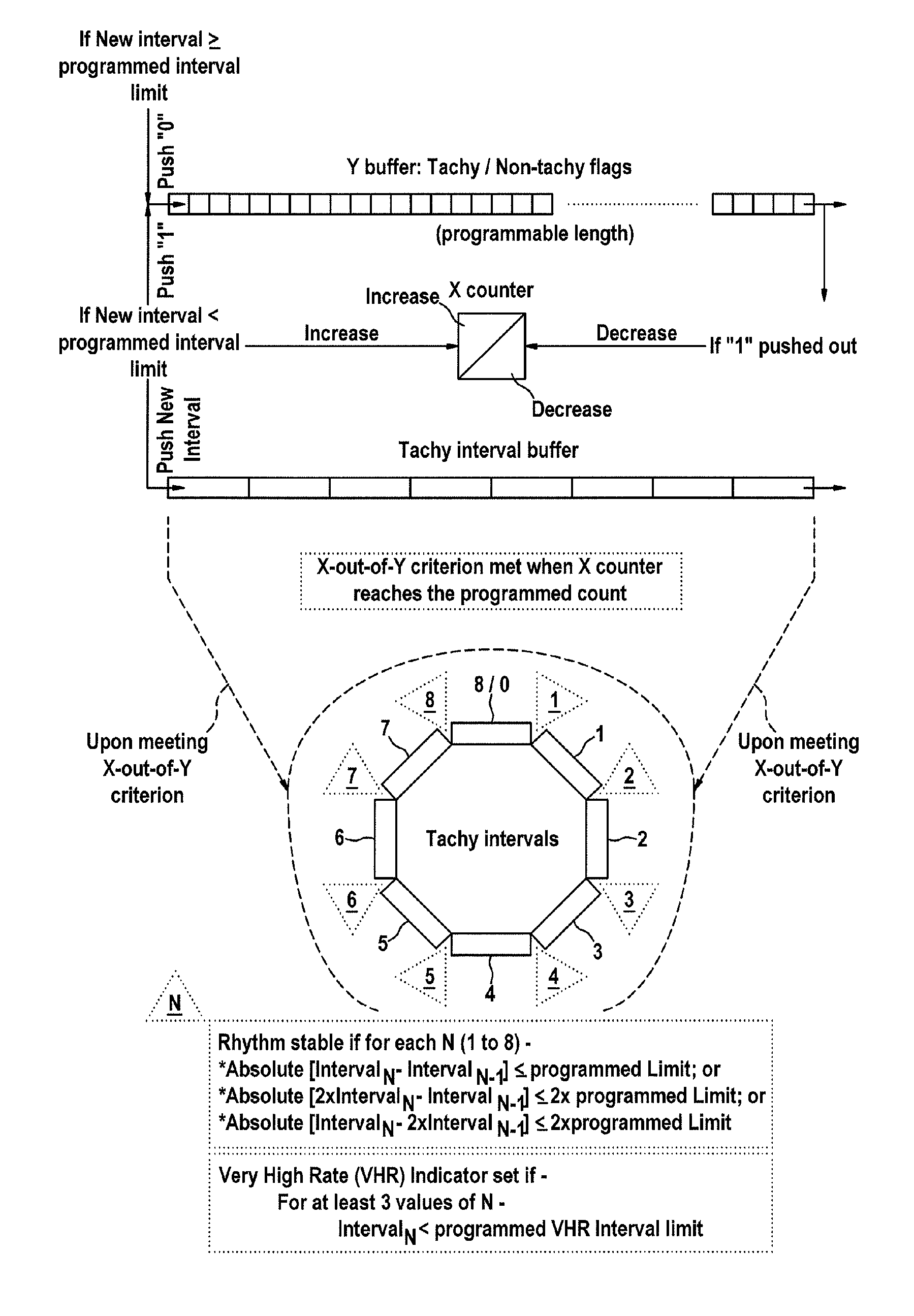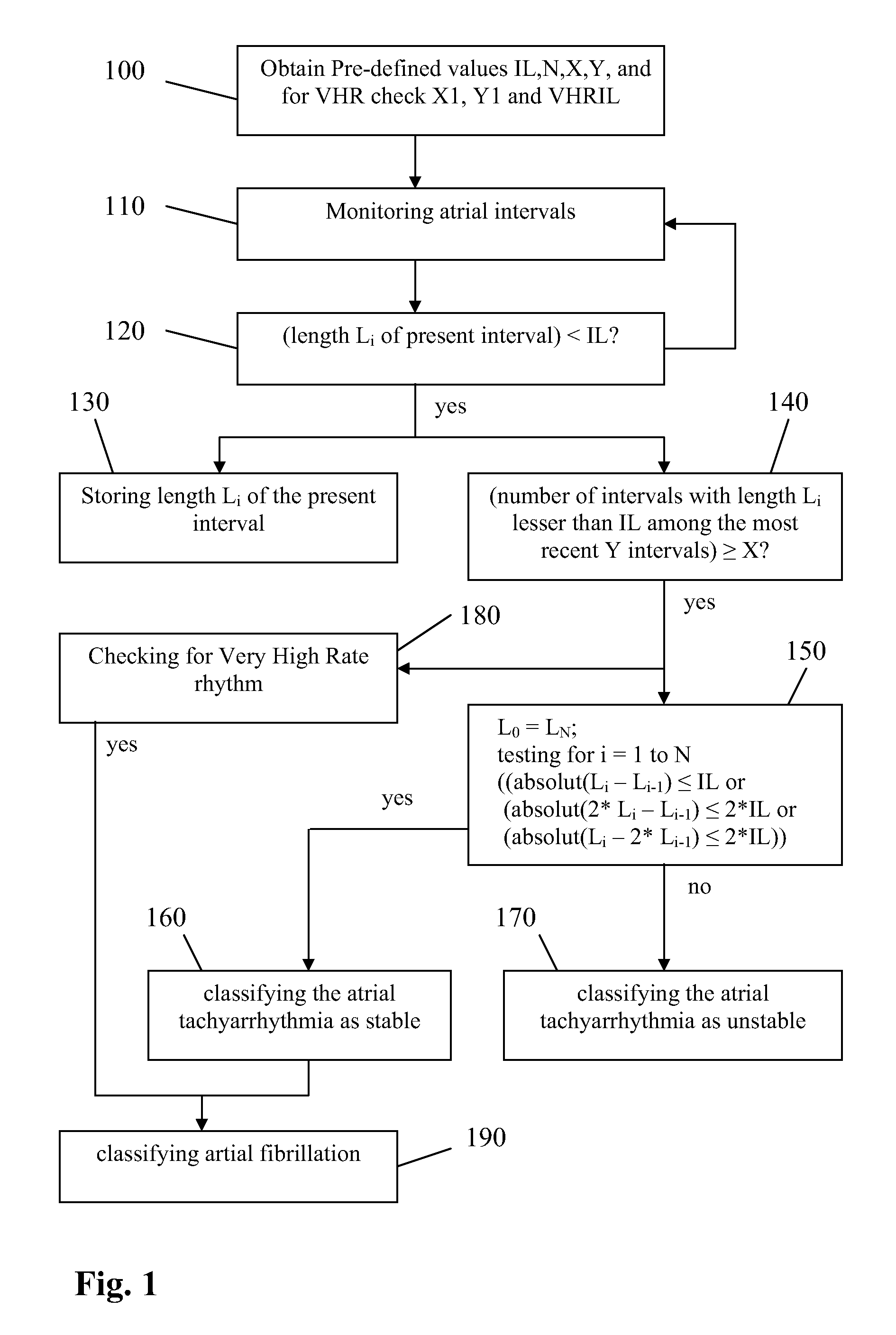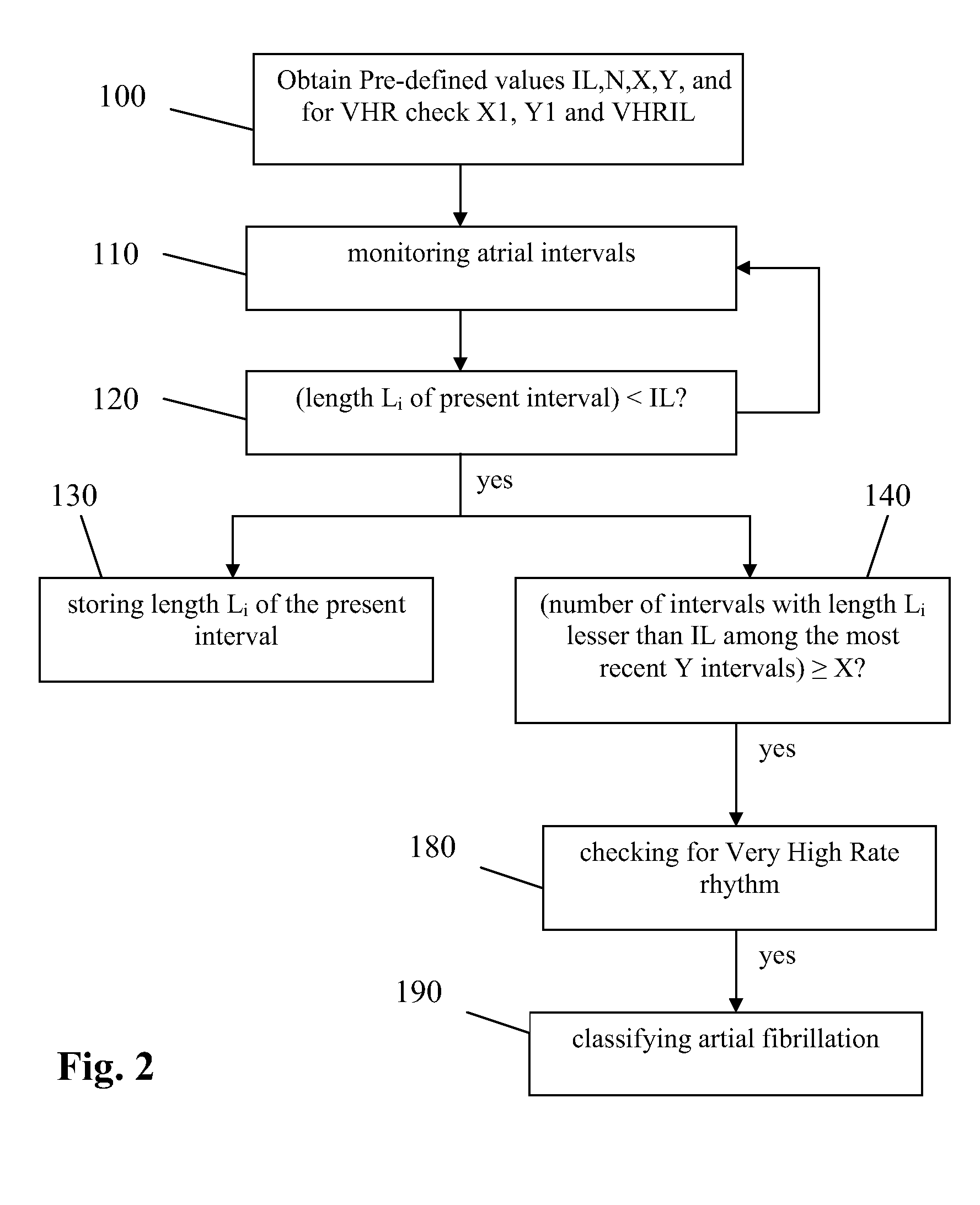Device, method and computer-readable storage medium for classifying atrial tachyarrhythmia
a technology of atrial tachyarrhythmia and computer-readable storage medium, which is applied in the field of implantable cardiac devices, can solve the problems of complicated and otherwise simple tasks, and may not be compatible with chamber pacemakers or icds, and achieve the effects of determining the stability of the rhythm, high rate rhythm, and high rate rhythm
- Summary
- Abstract
- Description
- Claims
- Application Information
AI Technical Summary
Benefits of technology
Problems solved by technology
Method used
Image
Examples
first embodiment
[0093]FIG. 1 shows an example of the method for classifying atrial tachyarrhythmia according to the invention. In a first step 100 pre-defined values IL, N, X and Y, and for the Very High Rate (VHR) check X1, Y1 and VHRIL are obtained. IL denotes the limit for indicating an atrial interval as being a “tachy-interval”, if the length L of the atrial interval is shorter than IL. Numbers X and Y denotes the parameter of the “X-out-of-Y” criterion, i.e. in the scope of the invention atrial tachyarrhythmia is indicated if X among the most recent Y number of intervals have a length L shorter than IL. N denotes the number of “tachy-intervals” which are considered in the stability check 150. VHRIL denotes the Very High Rate Interval Limit. An atrial interval having a length L shorter than IL is incorporated in the VHR check. Numbers X1 and Y1 denotes the parameter of a second “X1-out-of-Y1” criterion, i.e. in the scope of the invention VHR is indicated if X1 among the most recent Y1 number o...
second embodiment
[0110]FIG. 4 depicts a functional block diagram of a device which is arranged for executing a method for classifying atrial tachyarrhythmia according to the Such a device 400 comprises:[0111]storage means 410 for storing the pre-defined values IL, X, X1, Y, Y1 and VHRIL;[0112]means 320 for monitoring cardiac events;[0113]means 330 for deciding whether an atrial interval has a length shorter than IL or not, the means 330 for deciding being communicatively connected with the storage means 410 and the means 320 for monitoring;[0114]a first FIFO buffer 340 of size Y communicatively connected with the means 330 for deciding for storing flags indicating whether an atrial interval has a length shorter than IL or not;[0115]a counter 350 communicatively connected with the means 320 for monitoring and with the first FIFO buffer 340 for counting atrial intervals with a length shorter than IL among the most recent Y number of atrial intervals;[0116]a second FIFO buffer 360 of size Y1 communica...
PUM
 Login to View More
Login to View More Abstract
Description
Claims
Application Information
 Login to View More
Login to View More - R&D
- Intellectual Property
- Life Sciences
- Materials
- Tech Scout
- Unparalleled Data Quality
- Higher Quality Content
- 60% Fewer Hallucinations
Browse by: Latest US Patents, China's latest patents, Technical Efficacy Thesaurus, Application Domain, Technology Topic, Popular Technical Reports.
© 2025 PatSnap. All rights reserved.Legal|Privacy policy|Modern Slavery Act Transparency Statement|Sitemap|About US| Contact US: help@patsnap.com



